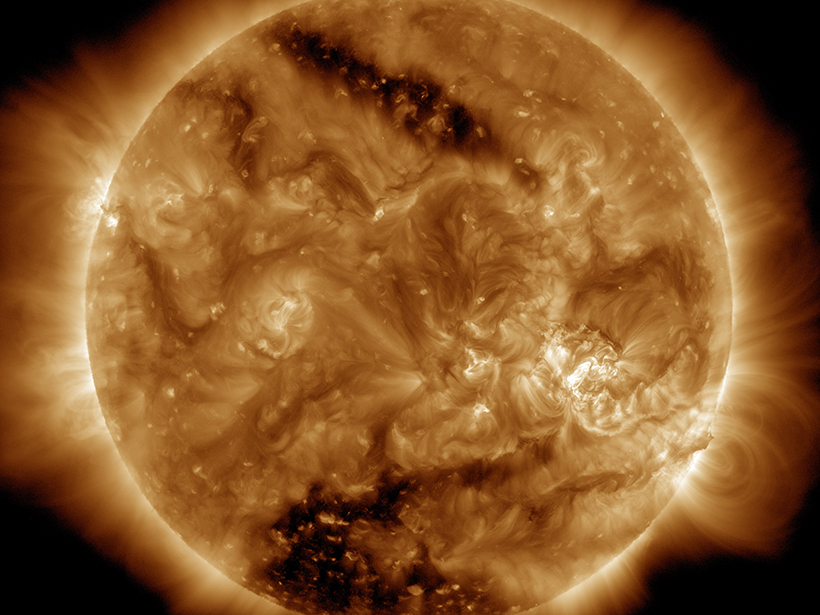A new study suggests that magnetic reconnection may fuel slow solar winds, which top out at speeds below 500 kilometers per second.
Geophysical Research Letters
Does Water Vapor from Volcanic Eruptions Cause Climate Warming?
By studying past volcanic eruptions, scientists find that the amount of water vapor reaching the stratosphere during moderately explosive eruptions may not be contributing to the greenhouse effect.
Cold Temperatures Set Off Slow-Moving Landslides
Falling ground temperatures in the cold season are found to trigger shallow, slow-moving landslides on slopes with clayey soil.
Minerals Hint at Liquid Groundwater, More Oxygen in Mars's Past
Manganese deposits in Gale Crater fractures are similar to Earth features that usually require flowing water and highly oxidizing conditions.
Going Against the Flow: Documenting Seasonal Current Reversal
Scientists discover the source of a coastal Korean current that reverses its flow in the summer.
Tackling the Paris Temperature Targets
The global temperature targets established in Paris in 2015 are ambitious; new research examines what it would take to achieve those targets.
How Irrigation in Asia Affects Rainfall in Africa
Up to 40% of the total rainfall in arid parts of East Africa may be caused by water vapor from farming practices in South Asia.
In the Eastern Pacific Ocean, the "Blob" Overshadows El Niño
Underwater gliders and ocean modeling reveal unexpectedly weak El Niño effects on a major West Coast current.
New Geophysical Research Letters Editorial, Revisions Policies
Changes in submittal, editorial, and review policies support high standards and timely publication in the face of the increasing number of papers submitted.
Volcanic Eruptions Stir an Already Complex Atmosphere
A study of Earth's atmospheric response to major volcanic eruptions seeks to reconcile contradictions between observations and climate models.









